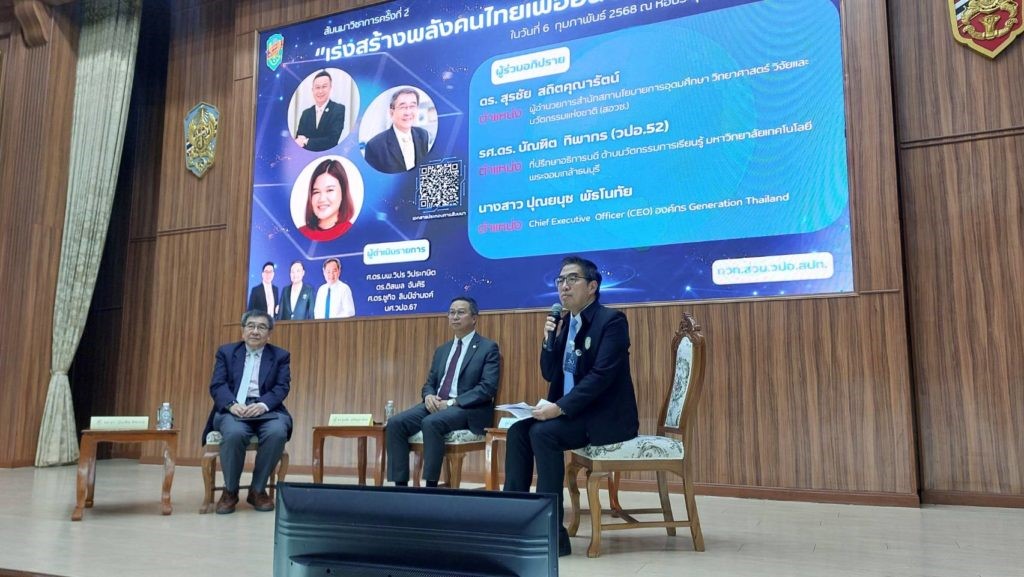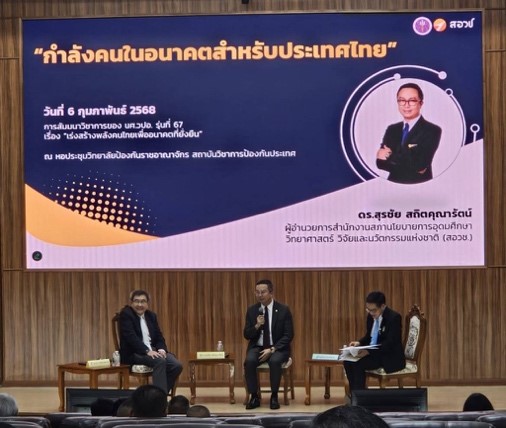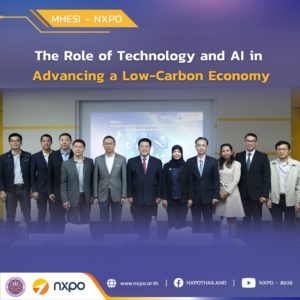On 6 February 2025, NXPO President Dr. Surachai Sathitkunarat participated in the “Accelerating Thai Workforce Development for a Sustainable Future” seminar hosted by the National Defence College (NDC). He delivered a presentation on human resource development policies to audience comprising NDC students and faculty members.


Dr. Surachai highlighted key challenges facing Thailand’s education system amid global shifts, including an aging society, multistage life, disruptive technologies, digital transformation, climate change, emerging infectious diseases, geopolitical shifts, resource scarcity, and social disparity. Currently, Thailand produces 300,000 graduates annually, with 100,000 in STEM fields and 200,000 in non-STEM fields. Engineering leads STEM disciplines, with 40,000 graduates per year, while Business Administration tops non-STEM fields, with 90,000 graduates annually. According to NXPO’s Talent Landscape Study (2025–2029), the top three industries with the highest workforce demand are Aviation and Logistics (440,573 workers), Smart Electronics and Robotics (226,423 workers), and Digital Industry (87,568 workers).
To address these demands, Dr. Surachai outlined key policies and initiatives supporting workforce development:
- Skill Development for Emerging Industries – Special cooperative education (Coop+) in Semiconductor and Advanced Electronics to enhance workforce readiness.
- Higher Education Sandbox Initiative – A novel model fostering innovation-driven education in high-demand sectors. A key example is Chulalongkorn University’s Computer Engineering and Digital Technology (CEDT) program.
- Intensive Short-Course Training – The GenNX Model, designed to upskill individuals for employment in high-demand industries.
- STEMPlus Platform – A platform supporting high-skilled workforce development for the manufacturing and service sectors, which has so far created 10,684 new jobs and trained 445,967 individuals through 1,205 courses from 129 training units.
Looking ahead, future workforce policies will emphasize career development and essential skill mapping to align education with industry needs. The Skill Mapping Platform will strengthen career guidance and future skill development. These efforts aim to create demand-driven education programs, enhancing both workforce readiness and educational quality to meet evolving labor market needs.






















